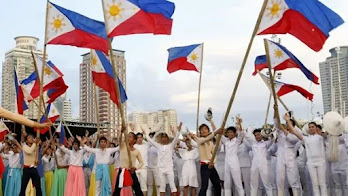To Conquer or To Die
"Bayan o Sarili? pumili ka!"-Heneral Luna
Freedom is what the Filipino people longed for during Spanish rule. The Philippines were colonized for over 300 years by the Spanish government and named the Philippines after King Philip II of Spain. They first attempted to get ahold of the Philippines when Ferdinand Magellan's expedition landed on Homonhon Island in the Philippines in 1521. Magellan demanded that all local chiefs submit to Spanish rule, but Lapu Lapu refused. Magellan fought a battle in an attempt to subdue Lapu Lapu, but he was defeated and killed.
However, when Miguel Lopez de Legazpi led an expedition to Cebu in 1565, the Spaniards finally gained a foothold in the Philippines. In 1571, the Spaniards built Intramuros, now known as Manila, which became the capital. Eventually, Spanish rule took over the system, with Spanish estates and Filipino laborers. This changed in 1762 when the British captured Manila. The city was returned in 1764 under the terms of the Treaty of Paris, which was signed in 1763.
The rebellion grew with the help of Jose Rizal, who wrote the novels "El Filibusterismo" (The Filibusterer) and "Noli Me Tangere" (Touch Me Not), causing a sensation of nationalism throughout the Philippines and causing a stir in the Spaniards. Jose Rizal founded the Liga Filipina movement in 1892, which advocated for reform rather than revolution. Rizal was arrested and exiled to Dapitan as a result.
Andres Bonifacio also founded a revolutionary organization known as the KKK, or " Katastaasang Kagalanggalangang Katipuanan ng mga Anak ng Bayan ". A revolution began in August 1896, and Jose Rizal was executed in Bagumbayan on December 30, 1896, under the guise of supporting the revolution. His execution infuriated Filipinos, fueling the revolution.
Then, in 1898, the war between Spain and the United States began. On April 30, 1898, the Americans defeated the Spaniards in Manila Bay. Seizing this opportunity, Filipino revolutionaries led by Emilio Aguinaldo surrounded Manila and declared the Philippines independent on June 12. However, when Aguinaldo was captured in 1902, American rule took over.
Under American leadership, the Philippines was made a commonwealth and semi-independent country in 1935. The United States promised the Philippines complete independence in 1945. The Philippines is then invaded again, this time by the Japanese. The Japanese took control of the Philippines on December 10, 1941. American troops returned to the Philippines in October 1944 and defeated the Japanese. The Philippines gained independence on July 4, 1946, with Manuel Roxas as the country's first president.
Every year on the 12th of June, we remember the heroes who fought for our country's independence. May we continue to fight for the liberation of every Filipino. Let this serve as a source of inspiration for us to persevere in the face of challenges that await us and our country. I hope we never forget the significance of our valiant fellow Filipinos' fight for independence. May we keep fighting for the freedom that every Filipino deserves.Source:
http://www.philippine-history.org/independence-from-americans.htm
Image retrieved at https://dailyeventnews.com/independence-day-philippines/
Image retrieved at https://blog.helperchoice.com/philippine-national-day-2017-06-12/
Image retrieved at https://www.asianjournal.com/tag/philippine-independence-day/





Comments
Post a Comment